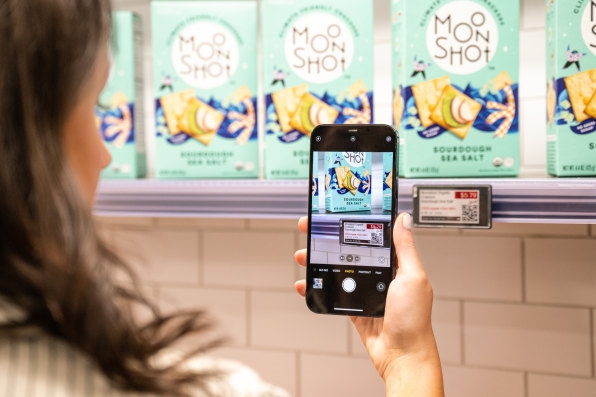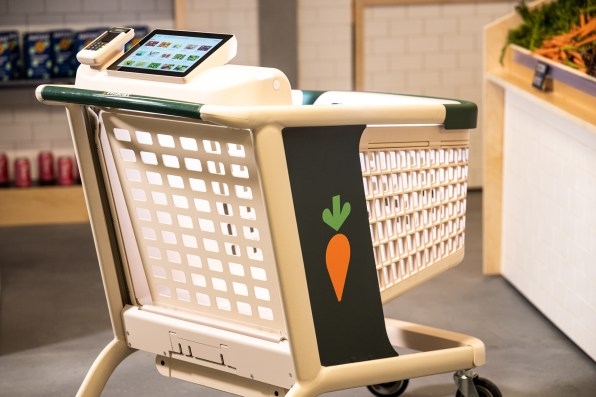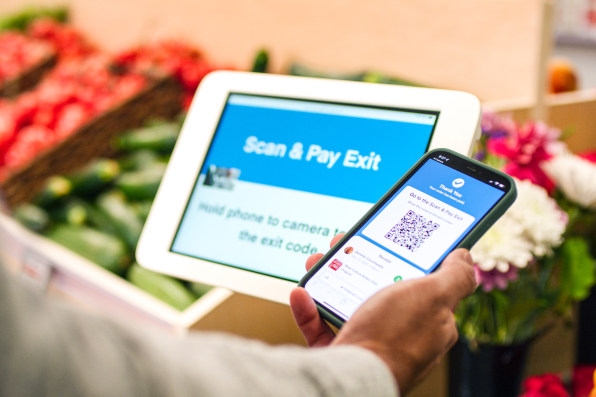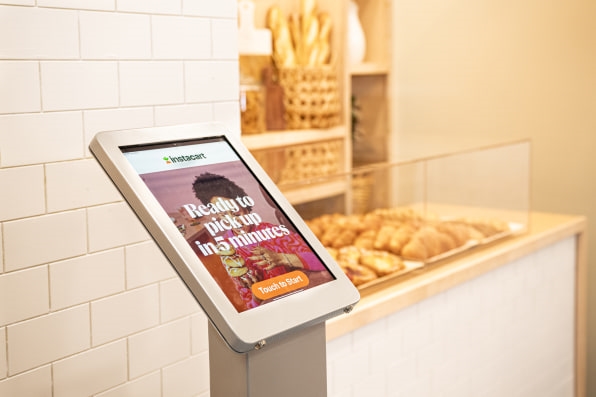Instacart launches suite of new features to make grocery stores smarter
Instacart on Monday announced Connected Stores, a suite of new and existing in-store tech for retailers who want to make their grocery stores smart.
The features, which U.S. and Canadian retailers can implement à la carte, are based on the idea of making the brick-and-mortar shopping experience more seamless, quick, and personalized. They include a new version of AI-powered Caper Carts, the ability to sync Instacart shopping lists to the smart carts, electronic shelf tabs (called Carrot Tags), scan and pay, department-specific orders, and out-of-stock insights.
“These are technologies that solve real consumer problems that we can all relate to,” CEO Fidji Simo tells Fast Company. “People don’t like waiting in line at checkout. People like having more information about the products they want. People want to find these products really fast, like all of these things are solving real pain points that can be addressed with technology.”

The company is poised to open its first fully connected store later this year with Good Food Holdings’ Bristol Farms store in Irvine, California. Wakefern Food Corp. and Schnucks locations will also roll out Caper Carts and Carrot Tags, respectively, in the coming months.
Instacart executives say that because the technology can be purchased individually, and that the integrations support existing hardware solutions, retailers won’t have to shell out millions of dollars retrofitting their stores. “The way in which we are building all of these technologies is to avoid retailers having to make a big investment,” Simo says. Even so, she says the investments have shown to pay off in the pilots. “We are seeing that when people use these technologies, they tend to spend more,” Simo adds.
Monday’s announcement builds off of the company’s 2021 acquisition self-checkout shopping cart-maker Caper AI for $350 million. The smart cart has been piloted at a handful of stores across the U.S., but the newest iteration is lighter, slimmer, and holds 65% more than its previous version.

The Caper Cart is similarly shaped to a regular shopping cart, but is equipped with a touchscreen, scales, and sensors so that shoppers don’t need to manually scan items. Users can simply drop items in the cart and check out right from the connected tablet. Retailers can stack the carts and use a single plug to charge them all, rather than plugging in each individual unit.
Instacart is also introducing Lists, which allows for users to connect their shopping list from either the Instacart App or the grocer’s specific Instacart-powered app to a Caper Cart. The list then pops up on the cart’s tablet, and shoppers can check them off as they place items in the cart.

For retailers who may not want to implement new carts, the company is powering something called Scan & Pay. The offering has users scan items as they shop and pay for them using their mobile phone, so that they don’t have to wait in line. Additionally, the company is offering a tool that lets shoppers order from multiple departments (like deli, bakery, and so on) at once so a person can request items from different in-store spots and have them ready at the same time.
The digital shelf tabs, called Carrot Tags, help users find items by flashing a light if a shopper needs some help locating goods. The tags display information like whether it’s gluten-free or Kosher, and include QR codes so that people can scan and learn more about the item. Retailers can also access Instacart’s out of stock insights, which would mean stores miss out on fewer sales.

“[The technology] frees up labor to go do the types of things that retailers really want to prioritize in the store, like better customer service and restocking the shelves so that the products are always available to consumers, which is incredibly important in a very tight labor market,” Simo says.
Simo makes it clear that the company’s goal isn’t to launch its own grocery store. “The goal of this strategy is rooted in empowering retailers, we will not be a retailer ourselves,” she says. “Our job is to build these technologies to empower them.”
While it started out as a gig platform for users to get groceries delivered to their homes, Instacart has since started offering software services to retailers. Under the Instacart Platform umbrella (which now includes Connected Stores), the company offers software management for things like advertisements, e-commerce, insights, and other data for grocery stores. By moving past the gig-work model, which is traditionally a difficult place to make money, the company can likely create a larger revenue stream.
The latest offerings come as the company prepares for its market debut. Instacart confidentially filed for an initial public offering in May, and is reportedly expected to hit the markets before the end of the year. Instacart was one of the pandemic darlings, with the company seeing a sales boost as people avoided shopping in-person and placed online grocery orders.
That momentum has apparently continued as restrictions eased. The company reached its highest quarterly revenue ever in the second quarter of 2022, up 39% year over year to $621 million, according to the Wall Street Journal, which also reported that the number of orders placed via Instacart increased 25% from the same period a year ago to more than 60 million.
(14)


